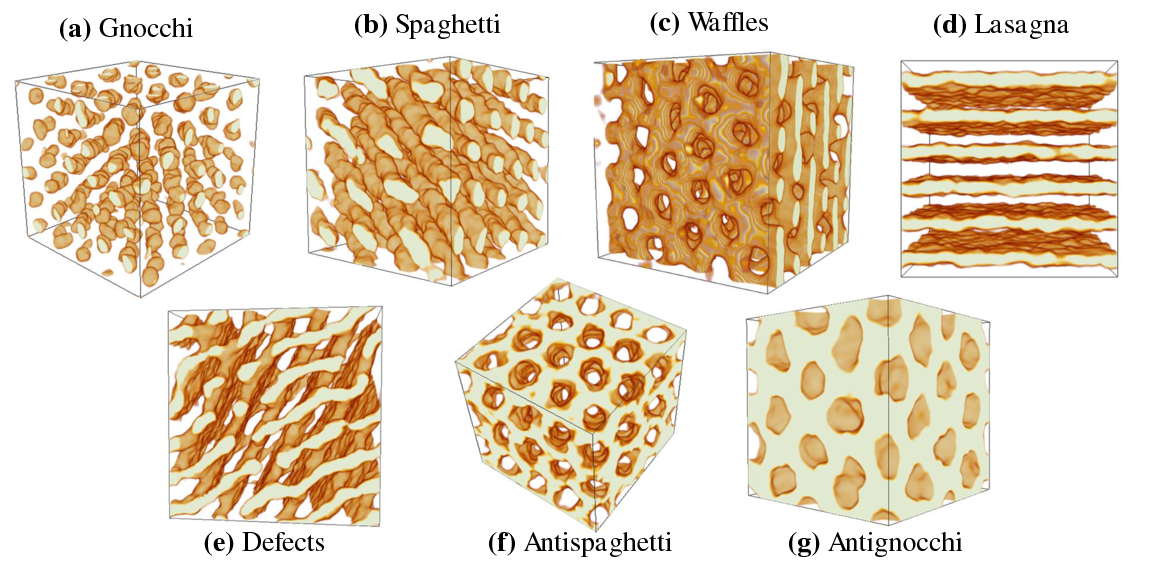Don't Eat This! A Recipe for "Nuclear Pasta"
July 10, 2018
Add a Pinch of Protons to Some Degenerate Neutronium...

(Click image to enlarge)
Image Credit: Matt Caplan, Indiana University Dept. of Physics; Nuclear Theory Center
The last breath of a dying star can be seen in the incomprehensibly powerful explosions known as supernovae, but what's left behind afterwards is equally awe-inspiring: the gravitational pull of this stellar remnant is so great that electrons and protons are forced together to form a big ball composed almost entirely of neutrons (with a few protons and electrons interspersed), the "degenerate matter" of a neutron star.
What's Going On Here?
An atom of ordinary matter has both protons and neutrons in its nucleus, and the positive charge provided by the protons keeps these nuclei apart from one another, since alike charges repel. Meanwhile, the nuclear strong force holds the nuclei themselves together, and keeps the protons inside the nucleus from pushing one another away. In the interior of a neutron star, however, the pressure is so great that these attractive and repulsive forces come roughly into balance with one another. As you look further down toward the core of a neutron star, the increasing pressure changes the balance between these forces, causing the degenerate matter to assume a variety of weird geometries, like the ones shown above. Keep in mind we can't observe these—their behavior has to be calculated with supercomputers—but the mathematical models predict the formation of large balls, then long strings, then flat sheets, followed by further, even stranger shapes. The resemblance between these first few phases and the familiar shapes of noodles earned this phenomenon its name: Nuclear Pasta.














